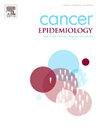外阴鳞状细胞癌的患者人口统计学和预后因素:一项国家癌症数据库研究。
IF 2.3
3区 医学
Q3 ONCOLOGY
引用次数: 0
摘要
背景:外阴鳞状细胞癌(VSCC)的发病率和临床结果与人口统计学因素相关,但没有研究广泛调查后加德西时代VSCC的人口统计学和预后因素与生存的关系。本研究旨在探讨VSCC的潜在差异,并将这些因素与生存率联系起来。方法:使用2007年至2021年的患者数据,从国家癌症数据库中使用外阴结构特异性的ICD-10代码,鳞状细胞癌和恶性前外阴上皮内瘤变III级(VIN3)的ICD-O-3组织学代码和患者数据对患者进行识别。统计分析采用IBM SPSS和GraphPad Prism交叉分析和卡方检验确定变量频率,Kaplan Meier生存曲线采用Log-Rank两两比较,Cox比例风险回归模型。结果:符合纳入标准的患者总人数为58,732例。中位诊断年龄为64.0岁。导致生存率提高的重要预后因素包括VIN3组织学、较低的Charlson-Deyo评分、黑人种族、接受学术/研究项目的护理、私人保险和收入中位数大于63,000美元。外科手术对提高生存率有显著意义。黑人患者比白人和其他种族的患者更年轻。组织学类型VIN3与生存时间增加相关,表明早期识别和治疗可获得更好的结果。结论:确定了影响VSCC人群生存的关键人口统计学和预后因素。本研究可作为重新评估当前妇科筛查方案的工具,以促进整个VSCC患者群体的早期诊断和管理。本文章由计算机程序翻译,如有差异,请以英文原文为准。
Patient demographic and prognostic factors of vulvar squamous cell carcinoma: A National Cancer Database Study
Background
Vulvar Squamous Cell Carcinoma (VSCC) incidence rates and clinical outcomes are correlated with demographic factors, but no study expansively investigates demographic and prognostic factors of VSCC in relation to survival in the post-Gardasil era. This study aims to investigate underlying disparities in VSCC and correlate these factors with survival.
Methods
Patients were identified from the National Cancer Database using ICD-10 codes specific for vulvar structures, ICD-O-3 histology codes for squamous cell carcinoma and pre-malignant vulvar intraepithelial neoplasia Grade III (VIN3), and patient data from 2007 to 2021. Statistical analyses utilized IBM SPSS and GraphPad Prism to determine variable frequency with cross analysis and Chi-Squared tests, Kaplan Meier Survival Curves with Log-Rank Pairwise Comparison, and Cox Proportional Hazards Regression Models.
Results
The total patient population was 58,732 patients after inclusion criteria. The median age of diagnosis was 64.0 years old. Significant prognostic factors resulting in better survival included VIN3 histology, lower Charlson-Deyo Score, Black race, receiving care from Academic/Research Programs, private insurance, and median income greater than $63,000. Surgical procedures were significant in improving survival. Black patients are diagnosed younger than White and Other races. A histology type of VIN3 was associated with increased survival time, indicating early identification and treatment for better outcomes.
Conclusion
Key demographic and prognostic factors that influence survival were identified across the VSCC population. This study may serve as a tool in reevaluation of current gynecological screening protocols to promote early diagnosis and management for the entire VSCC patient population.
求助全文
通过发布文献求助,成功后即可免费获取论文全文。
去求助
来源期刊

Cancer Epidemiology
医学-肿瘤学
CiteScore
4.50
自引率
3.80%
发文量
200
审稿时长
39 days
期刊介绍:
Cancer Epidemiology is dedicated to increasing understanding about cancer causes, prevention and control. The scope of the journal embraces all aspects of cancer epidemiology including:
• Descriptive epidemiology
• Studies of risk factors for disease initiation, development and prognosis
• Screening and early detection
• Prevention and control
• Methodological issues
The journal publishes original research articles (full length and short reports), systematic reviews and meta-analyses, editorials, commentaries and letters to the editor commenting on previously published research.
 求助内容:
求助内容: 应助结果提醒方式:
应助结果提醒方式:


